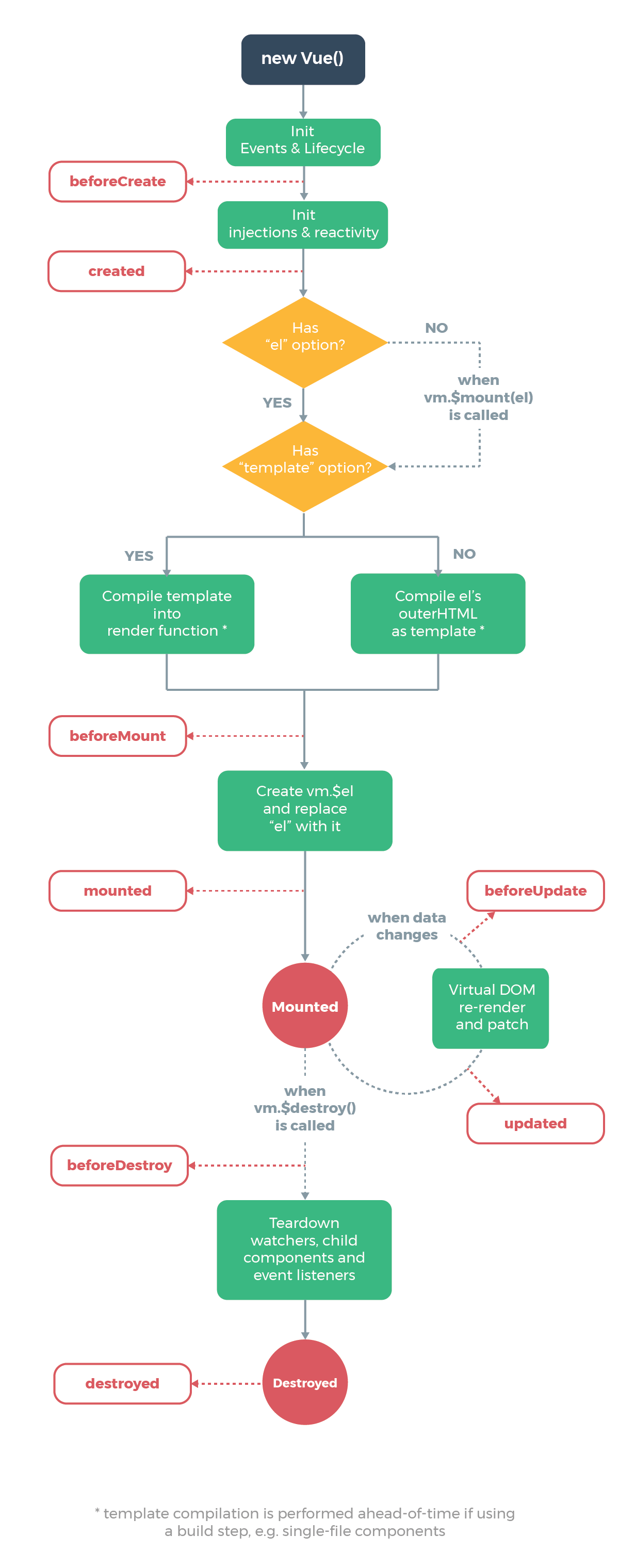Appearance
Table of Contents generated with DocToc
NextTick principle analysis
nextTick allows us to defer the callback to be executed after the next DOM update cycle, to get the updated DOM.
Before version 2.4, Vue used microtasks, but the priority of microtasks is too high, and in some cases, it may faster than event bubbling, but if you use macrotasks, there may be some issues of rendering performance. So in the new version, microtasks will be used by default, but macrotasks will be used in special cases, such as v-on.
For implementing macrotasks, you will first determine if setImmediate can be used, if not, downgrade to MessageChannel. If not again, use setTimeout.
js
if (typeof setImmediate !== 'undefined' && isNative(setImmediate)) {
macroTimerFunc = () => {
setImmediate(flushCallbacks)
}
} else if (
typeof MessageChannel !== 'undefined' &&
(isNative(MessageChannel) ||
// PhantomJS
MessageChannel.toString() === '[object MessageChannelConstructor]')
) {
const channel = new MessageChannel()
const port = channel.port2
channel.port1.onmessage = flushCallbacks
macroTimerFunc = () => {
port.postMessage(1)
}
} else {
/* istanbul ignore next */
macroTimerFunc = () => {
setTimeout(flushCallbacks, 0)
}
}nextTick also supports the use of Promise, which will determine whether Promise is implemented.
js
export function nextTick(cb?: Function, ctx?: Object) {
let _resolve
// Consolidate callback functions into an array
callbacks.push(() => {
if (cb) {
try {
cb.call(ctx)
} catch (e) {
handleError(e, ctx, 'nextTick')
}
} else if (_resolve) {
_resolve(ctx)
}
})
if (!pending) {
pending = true
if (useMacroTask) {
macroTimerFunc()
} else {
microTimerFunc()
}
}
// Determine if Promise can be used
// Assign _resolve if possible
// This way the callback function can be called in the way of promise
if (!cb && typeof Promise !== 'undefined') {
return new Promise(resolve => {
_resolve = resolve
})
}
}Lifecycle analysis
The lifecycle function is the hook function that the component will trigger when it initializes or updates the data.

The following code will be called at initialization, and lifecycle is called by callHook
js
Vue.prototype._init = function(options) {
initLifecycle(vm)
initEvents(vm)
initRender(vm)
callHook(vm, 'beforeCreate') // can not get props data
initInjections(vm)
initState(vm)
initProvide(vm)
callHook(vm, 'created')
}It can be found that in the above code when beforeCreate is called, the data in props or data cannot be obtained because the initialization of these data is in initState.
Next, the mount function will be called
js
export function mountComponent {
callHook(vm, 'beforeMount')
// ...
if (vm.$vnode == null) {
vm._isMounted = true
callHook(vm, 'mounted')
}
}beforeMount will be executed before mounting the instance, then starts to create the VDOM and replace it with the real DOM, and finally call the mounted hook. And there’s a judgment logic here that if it is an external new Vue({}) , $vnode doesn’t exist, so the mounted hook will be executed directly. If there are child components, they will be mounted recursively, only when all the child components are mounted, the mount hooks of the root components will be executed.
Next, it comes to the hook function that will be called when the data is updated.
js
function flushSchedulerQueue() {
// ...
for (index = 0; index < queue.length; index++) {
watcher = queue[index]
if (watcher.before) {
watcher.before() // call `beforeUpdate`
}
id = watcher.id
has[id] = null
watcher.run()
// in dev build, check and stop circular updates.
if (process.env.NODE_ENV !== 'production' && has[id] != null) {
circular[id] = (circular[id] || 0) + 1
if (circular[id] > MAX_UPDATE_COUNT) {
warn(
'You may have an infinite update loop ' +
(watcher.user
? `in watcher with expression "${watcher.expression}"`
: `in a component render function.`),
watcher.vm
)
break
}
}
}
callUpdatedHooks(updatedQueue)
}
function callUpdatedHooks(queue) {
let i = queue.length
while (i--) {
const watcher = queue[i]
const vm = watcher.vm
if (vm._watcher === watcher && vm._isMounted) {
callHook(vm, 'updated')
}
}
}There are two lifecycle functions that aren’t mentioned in the above diagram, activated and deactivated, and only the kee-alive component has these two life cycles. Components wrapped with keep-alive will not be destroyed during the switch, but be cached in memory and execute the deactivated hook function, and execute the actived hook function after matching the cache and rendering.
Finally, let’s see the hook function that used to destroy the component.
js
Vue.prototype.$destroy = function() {
// ...
callHook(vm, 'beforeDestroy')
vm._isBeingDestroyed = true
// remove self from parent
const parent = vm.$parent
if (parent && !parent._isBeingDestroyed && !vm.$options.abstract) {
remove(parent.$children, vm)
}
// teardown watchers
if (vm._watcher) {
vm._watcher.teardown()
}
let i = vm._watchers.length
while (i--) {
vm._watchers[i].teardown()
}
// remove reference from data ob
// frozen object may not have observer.
if (vm._data.__ob__) {
vm._data.__ob__.vmCount--
}
// call the last hook...
vm._isDestroyed = true
// invoke destroy hooks on current rendered tree
vm.__patch__(vm._vnode, null)
// fire destroyed hook
callHook(vm, 'destroyed')
// turn off all instance listeners.
vm.$off()
// remove __vue__ reference
if (vm.$el) {
vm.$el.__vue__ = null
}
// release circular reference (#6759)
if (vm.$vnode) {
vm.$vnode.parent = null
}
}The beforeDestroy hook function will be called before the destroy operation is performed, and then a series of destruction operations are performed. If there are child components, they will be destroyed recursively, and only when all the child components are destroyed, the hook destroyed of the root component will be executed.
